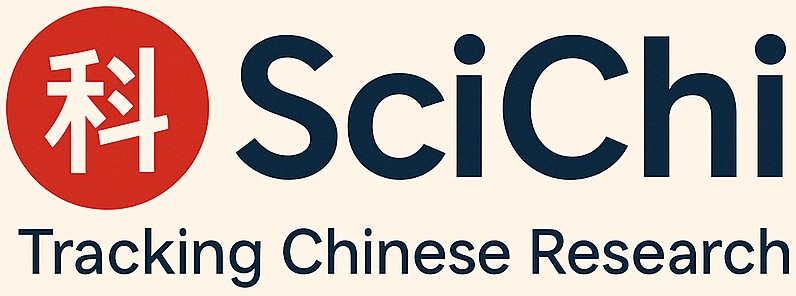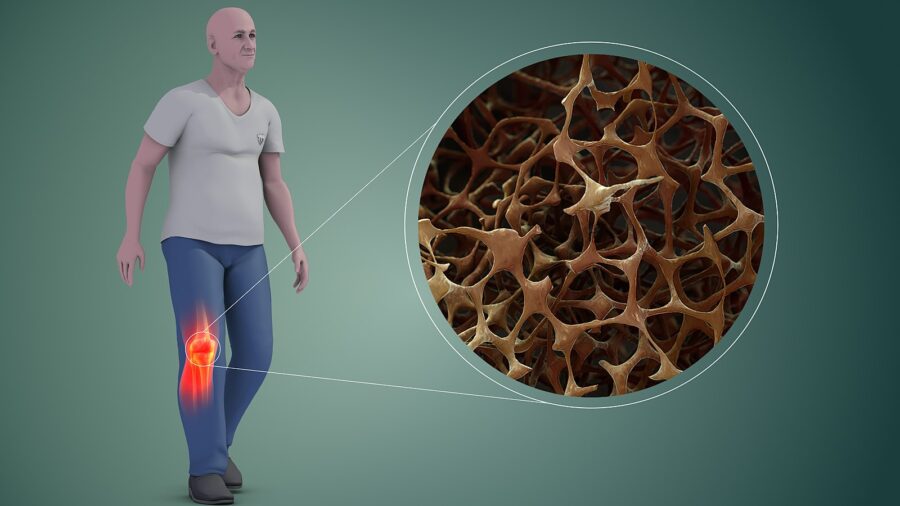A protein previously known for its role in brain and reproductive function may offer new hope for millions suffering from osteoporosis, according to a groundbreaking study published in Bone Research last month. Scientists have discovered that Neural EGFL-like 2 (NELL2) plays a crucial role in maintaining bone health—potentially opening the door to a new generation of treatments that not only prevent bone loss but actually stimulate new bone formation.
The research, conducted by scientists from Tianjin Medical University in China, reveals that NELL2 levels decrease with age and during menopause, precisely when osteoporosis risk increases. When researchers restored NELL2 in laboratory mice with osteoporosis, the animals showed significant improvements in bone density and quality.
Osteoporosis affects approximately 90 million people in China alone, with postmenopausal women being particularly vulnerable. The condition occurs when bone breakdown outpaces bone formation, leading to fragility and heightened fracture risk.
A Dual-Action Protein for Bone Health
What makes NELL2 particularly interesting is its dual beneficial effects. The protein simultaneously promotes bone-forming osteoblast cells while inhibiting the formation of fat cells in bone marrow—a double advantage for maintaining healthy bones.
In their experiments, researchers found that mice lacking NELL2 in bone-forming cells developed thinner bones with increased marrow fat, mirroring the pattern seen in human osteoporosis. Conversely, when NELL2 was delivered to osteoporotic mice using gene therapy techniques, both bone density increased and marrow fat decreased.
The researchers also discovered that NELL2 levels were lower in the blood of postmenopausal women with osteopenia or osteoporosis compared to those with normal bone density, suggesting potential diagnostic applications.
How NELL2 Works Inside Bone Cells
The study uncovered the precise molecular mechanism through which NELL2 affects bone cells. The protein binds to another protein called Fibronectin 1 on the cell surface, which then activates a signaling pathway involving focal adhesion kinase (FAK) and protein kinase B (AKT)—both known to be critical for bone formation.
This signaling cascade ultimately increases the expression of key bone-forming genes while suppressing fat cell development genes. The researchers confirmed this pathway through various experimental approaches, including:
- Creating mice with NELL2 specifically deleted in bone-forming cells
- Testing NELL2’s effects on cultured bone marrow cells
- Identifying the specific domains where NELL2 and Fibronectin 1 interact
- Delivering NELL2 gene therapy to mice with experimentally induced osteoporosis
Limitations of Current Treatments
The discovery comes at a critical time. Current osteoporosis treatments predominantly focus on slowing bone breakdown rather than stimulating new bone formation. Most medications also come with significant side effects and none completely restore bone health.
Antiresorptive drugs like bisphosphonates can effectively slow bone loss but don’t significantly increase bone formation. The few anabolic treatments that do stimulate bone growth often have limited treatment durations and may lose effectiveness over time.
Could NELL2-based therapies fill this treatment gap? The study suggests they might, offering a fundamentally different approach by targeting the body’s natural bone-building mechanisms while simultaneously preventing marrow fat accumulation.
From Laboratory to Treatment
Perhaps the most exciting finding came when researchers used adeno-associated virus (AAV) technology to deliver the NELL2 gene to mice that had undergone ovary removal to simulate menopause-induced osteoporosis.
Two months after treatment, these mice showed significantly improved bone structure compared to untreated controls. The therapy increased the number of bone-forming cells, reduced bone marrow fat cells, and even decreased bone-resorbing cells—essentially reversing the hallmarks of osteoporosis.
Dr. Baoli Wang, senior author of the study, highlighted the significance of these findings: “NELL2 represents a paradigm shift in osteoporosis treatment by simultaneously enhancing bone formation and suppressing fat deposition in the marrow. Our findings reveal a previously unrecognized pathway that could lead to more effective therapies, especially for postmenopausal women and aging populations.”
The Road Ahead
While these results are promising, several questions remain before NELL2-based treatments reach patients. Researchers must determine the optimal delivery method, dosage, and safety profile for human use. Gene therapy approaches like those used in the study are advancing rapidly but still face regulatory hurdles.
Additionally, the long-term effects of NELL2 treatment need further investigation. Would benefits persist after treatment ends? Could there be unexpected side effects in other tissues where NELL2 is naturally expressed, such as the brain or reproductive organs?
Despite these open questions, the discovery of NELL2’s role in bone biology represents a significant advance in our understanding of osteoporosis. With over 200 million people affected worldwide and limited effective treatments available, the potential of a therapy that actually rebuilds bone rather than just preventing further loss could transform how we manage this common and debilitating condition.
For the millions who suffer fractures, pain, and disability from osteoporosis each year, this protein may offer something that current treatments cannot—the prospect of not just halting bone loss but actually restoring bone strength and quality.
Discover more from SciChi
Subscribe to get the latest posts sent to your email.

